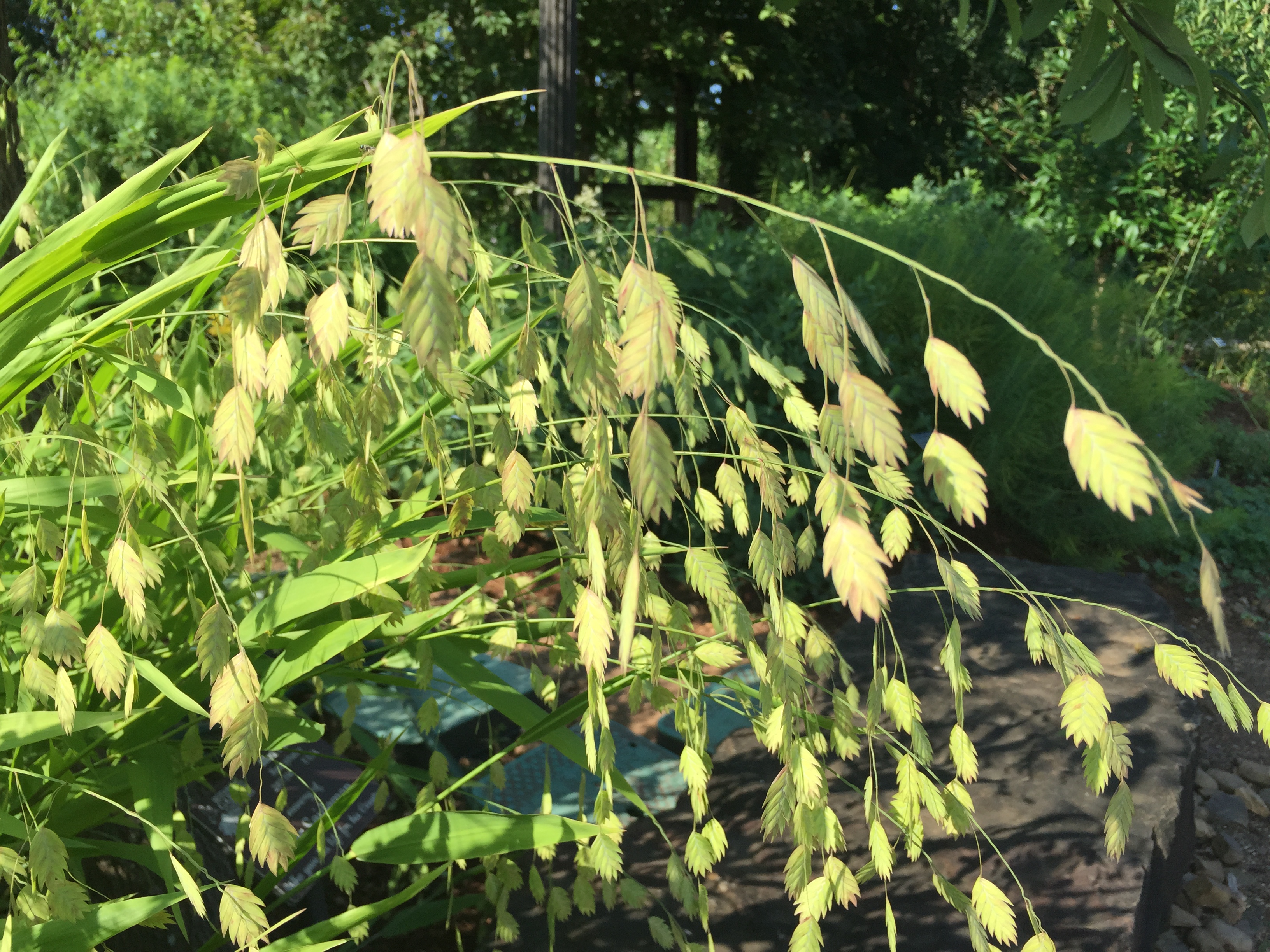Resource Library
Plant of the Week: Chasmanthium latifolium, Northern Sea Oats
Chasmanthium latifolium, Northern Sea Oats -- Northern Sea Oats is a native grass often found growing in shady woodlands along creeks and lakes. (Image courtesy Gerald Klingaman)
Download High Resolution
I heard on the radio the other day that plant names are stored in a different part of the brain than people names. According to evolutionary thinking, knowing plants helped our species acquire food while keeping track of people’s names was a social skill that helped us form a cohesive society. That explains why I’ve always found remembering plant names easy but people names a real challenge. One plant I’ve known the name of since my earliest days tromping the creeks of central Oklahoma was Northern Sea Oats, Chasmanthium latifolium.
Northern sea oats, also known as inland oats or woodoats, is a native perennial grass that grows 3 to 4 feet tall and spreads slowly by means of slender rhizomes. It grows from Pennsylvania to Florida, west to the Great Lakes and then southwest to Arizona and adjacent areas in Mexico. Chasmanthium is native to just North America with about 5 species described. This is the only species grown in gardens.
The slender plant stems grow erect with eight inch long, half inch wide leaves emerging at right angles off the stem, giving a young clump of the plant an almost bamboo like appearance. Early in the season the plant tends to be free standing but as the stems elongate and the seeds form it sprawls about. The foliage takes on a coppery to purplish tint with the first light frosts of fall and then turns a paper bag brown in the winter.
In midsummer numerous inch-long flattened spikelets containing the grass flower parts are produced in drooping terminal panicles on slender threadlike pedicels. Each spikelet contains 20 or so seeds and has the general shape of a small sunfish. The slightest breeze will set the spikelets to fluttering. These can be easily air dried for flower arrangements. August is the best time to collect stems for drying if green foliage and spikelets is desired.
The name “northern sea oats” never made much sense to me until I learned of sea oats (Uniola paniculata), a southern plant that grows on sand dunes from Virginia to Mexico along the Gulf. At one time northern sea oats was classified as a species of Uniola, but when reclassified its common name linkage to the true coastal sea oats was retained. Probably inland sea oats is a better name for this plant, which does not march out onto the dunes to protect shorelines.
Inland sea oats is a good, tall groundcover for shaded creek-side locations but is too rambunctious for most highly maintained perennial borders. It reseeds freely in wintertime-moist locations but less so in areas tending towards dryness during the germination season. I have groundcover beds planted adjacent to a stream bank where the grass grows wild and seedlings are emerging in the groundcover bed. It will grow equally well in full sun, but its natural habitat is dappled shade where moisture conditions are probably better for germination.
In 2004 Karen Stever of Gainsville, GA discovered a white variegated mutation of northern sea oats that she named ‘River Mist’ and patented in 2008 (pp 20,643). It has linear variegation patterns and looks somewhat like the variegated ribbon grass (Phalaris) except that the white striping extends into the spikeltes.
For more information about horticulture or to see other Plant of the Week columns, visit Extension's Web site, www.uaex.uada.edu, or contact your county extension agent. The Cooperative Extension Service is part of the U of A Division of Agriculture.
Pursuant to 7 CFR § 15.3, the University of Arkansas System Division of Agriculture offers all its Extension and Research programs and services (including employment) without regard to race, color, sex, national origin, religion, age, disability, marital or veteran status, genetic information, sexual preference, pregnancy or any other legally protected status, and is an equal opportunity institution.
